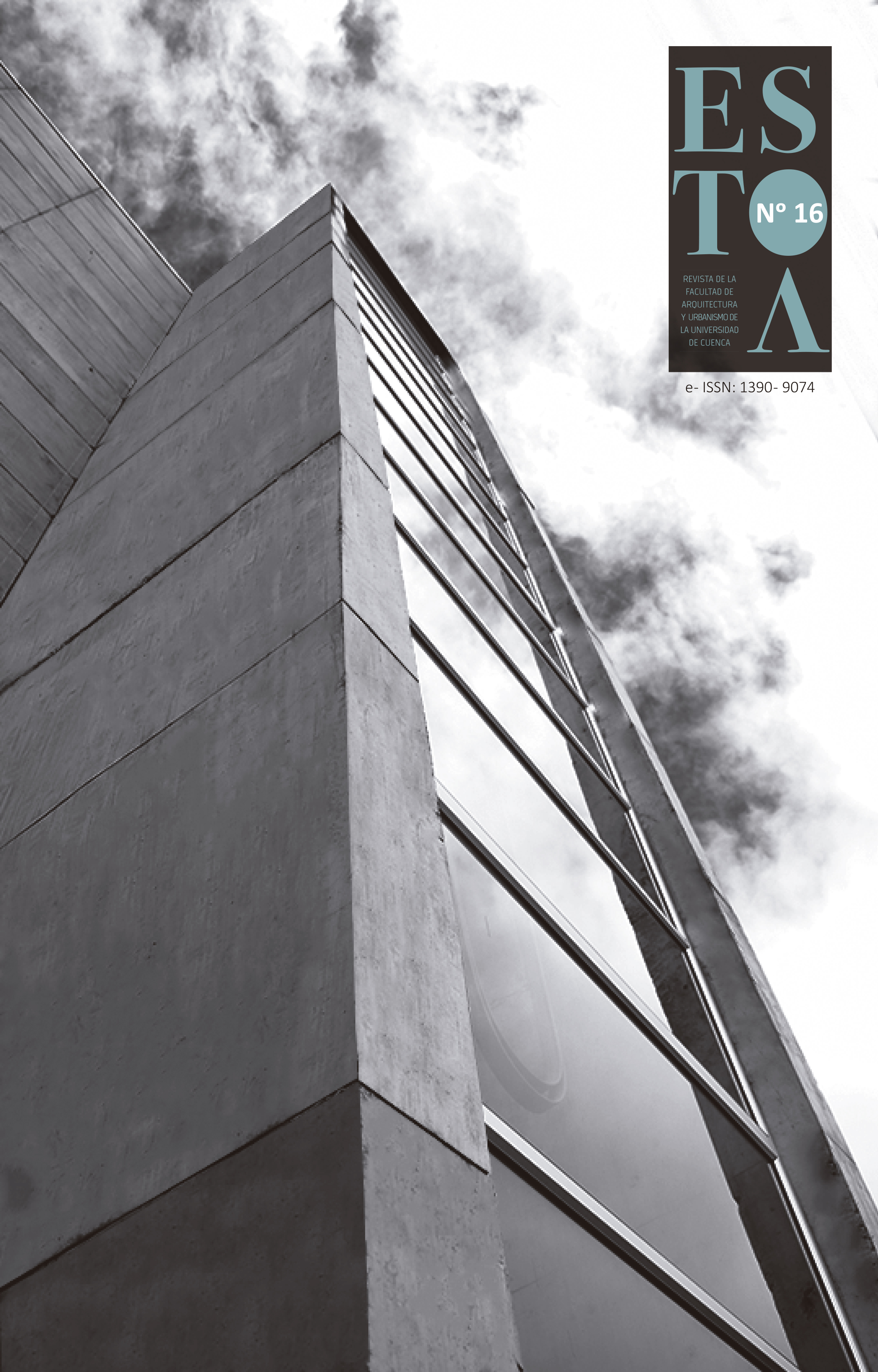Threaded queries. Inducting from transversality
DOI:
https://doi.org/10.18537/est.v008.n016.a10Keywords:
transversal, inductive learning, architectural learningAbstract
Inductive learning in architecture fits especially to the multi-faceted knowledge of our discipline, but methodologies that optimize resources are required, especially in formal education. A structured methodological model is set down through a sequence of activities and a content map, organized through threaded queries in which it underlies the various problems of the subject areas. These queries are tangible: the aim is to spark the debate since the interest lie in awakening about the goals of the course and the involvement of different knowledge areas.
Queries have to be woven carefully by the teaching staff. The student will answer them, from researching architectural examples, which are given previously, previously assigned by professors. Students, in small groups, must compile information concerning these examples, which will be the base of their activity. Their learning is performed on their own work and their public statements, which are extricated from the authorship strain. Thanks to this fact, they set a positive and active attitude. Professors must constrain their speech interventions, as established in Finkel’s book (2008) Teaching with your mouth shut. Democracy and authority, versus traditional power skills of carrots and sticks.
Downloads
References
De la Cova, Miguel A.; Galán, C.; Hernández, M. (2017). Proyecto docente de la asignatura. Recuperado de http://www.us.es/estudios/grados/plan_233/ asignatura_2330034
Bain, K. (2007). Lo que hacen los mejores profesores de Universidad. Valencia, España: Publicaciones de la Universitat de Valéncia.
Finkel, D. (2008). Dar clase con la boca cerrada. Valencia, España: Publicaciones de la Universitat de Valéncia.
Linazasoro, J.I. (1984). Apuntes para una teoría del proyecto. Valladolid, España: Universidad de Valladolid, Secretariado de Publicaciones.
Magendzo, A. (1998). El currículum escolar y los objetivos transversales. Pensamiento Educativo, 22.
Muñoz Cosme, A. (2008). El proyecto de arquitectura. Concepto, proceso y representación. Barcelona, España: Reverté.
Pallasmaa, J. (2012). Los ojos de la piel: La arquitectura y los sentidos. Barcelona, España: Editorial Gustavo Gili.
Sennett, R. (2009). El artesano. Madrid, España: Anagrama.
Siza Vieira, Á. (1988). Enseñanza y Proyecto. Barcelona, Quaderns (176).
Trillo de Leyva, J. L, (1993). Razones poéticas en arquitectura. Notas sobre la enseñanza de proyectos. Sevilla, España: Escuela Técnica Superior de Arquitectura, Departamento de Proyectos Arquitectónicos.
Zumthor, P. (2010). Pensar la arquitectura. Barcelona, España: Gustavo Gili.
Published
How to Cite
Issue
Section
License
The Journal declines any responsibility for possible conflicts derived from the authorship of the works that are published in it.
The University of Cuenca in Ecuador conserves the patrimonial rights (copyright) of the published works and will favor the reuse of the same ones, these can be: copy, use, diffuse, transmit and expose publicly.
Unless otherwise indicated, all contents of the electronic edition are distributed under a Creative Commons Attribution-NonCommercial-ShareAlike 4.0 International License.




